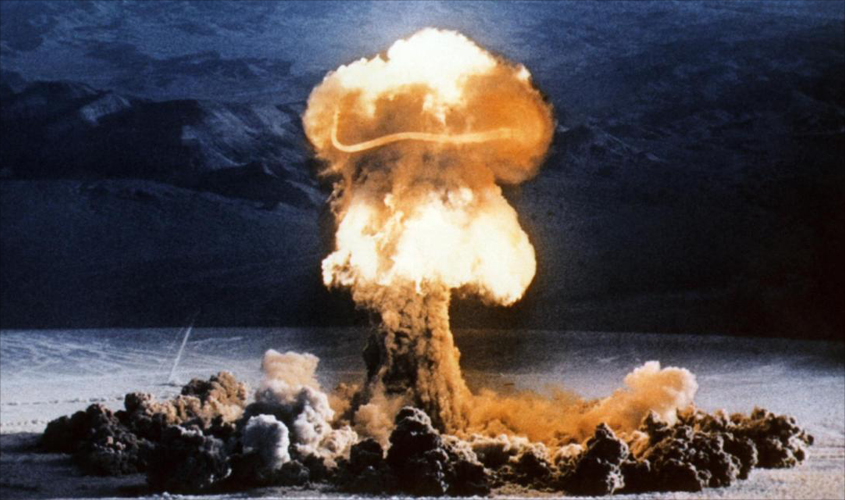Now we have uncertainty, with the risk of nuclear escalation in Asia and the Middle East. NATO is at its weakest since its foundation in 1949.
LONDON: “Sorry gentlemen, the meeting has been cancelled”, said our West German host as we arrived in a non-descript building just off the Kurfurstendamm in West Berlin for a reception prior to our talks. We had just flown in from London and our hosts had arrived from Bonn, which was then the capital of West Germany. It was the evening of 9 November 1989 and the reason for the cancellation quickly became clear: East Berliners were pouring into the West through a breached Berlin Wall. The world order was about to change.
The bipolar world of NATO and the Warsaw Pact had been under pressure for several years before 1989 as the people of Eastern Europe desperately tried to cast off the shackles of communism. They had come to realise that in contrast to State control and their low standard of living, the West had freedom and prosperity; they wanted the same.
This disparity was clearly evident as the tawdry Trabant cars from the East belched out acrid fumes as they travelled alongside polished Mercedes on the streets of West Berlin. With all meetings cancelled, I walked the streets along with East German families who, had they worn flashing lamps on top of their heads, could not have been so different to the native West Berliners. Mothers were coaxing their children to stroke bananas, fruit that they had only previously seen in picture books. Their grey, drab clothes contrasted with the haute couture of the West Berliners, a living metaphor for the failure of socialism.
The Iron Curtain was now exposed as a moth-eaten fabric, which was about to crumble under the weight of corruption and bureaucracy. The final act in the drama came two years later, on Christmas Day in 1991. Standing in my office in the British Embassy across the river from the Kremlin, I witnessed the hauling down of the Soviet hammer and sickle flag, replaced by the tricolour of the Russian Federation. The Cold War was officially over.
During the Cold War a nuclear NATO faced a nuclear Soviet Union. Although dangerous, there was a sense of predictability, described by that appropriate acronym MAD: Mutually Assured Destruction. Both sides knew that an attack by one side would trigger a retaliation which would have destroyed the world as we knew it. Because of this danger, good lines of communication were created between Washington and Moscow to ensure that Armageddon didn’t happen by accident. Although the world came close to nuclear conflict in the Berlin crisis between June and November 1961 and the Cuban crisis a year later, the magic of MAD worked and conflict was avoided. There were proxy wars in Asia, Africa and Latin America, but both sides largely respected the post-Yalta status quo in Europe.
Now we have uncertainty and unpredictability, with the risk of nuclear escalation in Asia and the Middle East. There is a real danger of terrorist groups and other non-state actors gaining access to weapons of mass destruction. An unpredictable President Vladimir Putin has already grabbed part of Ukraine and, although he denies it, has troops at war in the Eastern zone of that country. NATO is at its weakest since its foundation in 1949, with its very existence under threat by an unpredictable President Donald Trump.
Trump is not a team player and hates being part of a democratic grouping, preferring bilateral deals instead. While he is correct to criticise NATO countries for failing to invest on defence (only 4 in addition to America out of the 29 members meet the agreed 2% of GDP), there are fears that he will use this argument to weaken US defence links with Europe. NATO members are bracing themselves for a fiery time at the next NATO meeting on 11 July when Trump is expected to excoriate other leaders for relying on their low-cost defence subsidised by the American “piggybank”.
Fears increased when it was announced that Trump will have bilateral talks with Putin on 16 July in Helsinki, following the NATO Summit. Leaders point to the outcome of the recent North Korean summit, which resulted in Trump achieving only vague promises from Kim Jong-un, promises which according to recent reports from CNN are already being broken. Photos obtained a week ago show that North Korea has made rapid improvements to its infrastructure at the Yongbyon centre, used to produce weapons grade fissile material. Rather than a win-win heralded by Trump, this was more a Kim-win.
The wily ex-KGB Putin knows that the route to Trump’s head is through his ego and will use this ruthlessly in Helsinki. He has much to gain from this summit as NATO has always threatened Russian pride more than Russian security, and Putin is a virtuoso at appealing to wounded pride. Putin is also likely to give Trump some “sweeties” to take home to help with the forthcoming mid-term elections. NATO leaders, however, recall that before he was elected, Trump declared NATO as “obsolete” and are alarmed that using his theatrical style he will go off-piste and unilaterally offer Putin military concessions yet to be agreed by NATO, in return for the sweeties and a photo-op.
Last week, Jens Stoltenberg, the NATO Secretary General, sought to cast an optimistic version of the Trump/Putin meeting saying that “It is totally in line with NATO policies to talk to Russia. We don’t want a new Cold War.”
I felt more comfortable living through the old one.
John Dobson worked in UK Prime Minister John Major’s Office between 1995 and 1998 and is presently Chairman of the Plymouth University of the Third Age.

